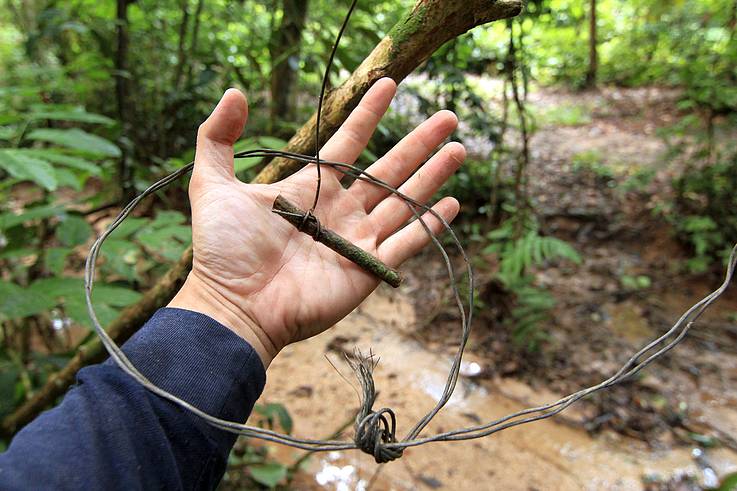Surviving in the wilderness is a challenge that demands resourcefulness, adaptability, and a deep understanding of nature. When faced with the unpredictability of the great outdoors, having a diverse set of survival skills can make all the difference. Among these skills, the use of snares stands out as a crucial technique that can provide sustenance when food sources are scarce. Snares, simple yet effective traps, have been utilized by humans for centuries to catch small game and secure nourishment. In this article, we delve into the importance of using snares as a survival tool in the wilderness, exploring their various types, construction techniques, and ethical considerations.
The Essence of Wilderness Survival
Surviving in the wilderness necessitates a holistic approach that encompasses shelter, water, fire, and food. While foraging for edible plants and hunting larger game might be viable options, they often require significant energy expenditure and favorable conditions. In contrast, snares offer a strategic advantage by employing minimal effort and resources to capture smaller prey, which can be a lifesaver in situations where energy conservation is critical.
Types of Snares
There are several types of snares, each tailored to the behaviors of different animals and the environment in which they are set. The basic principle behind all snares is the same: creating a noose that tightens around the animal’s body when it moves through the snare. Here are some common types of snares:
- Trigger Snare: This snare uses a trigger mechanism, such as a bent sapling, to create tension on the noose. When the animal disturbs the trigger, the snare tightens, ensnaring the prey.
- Peg Snare: A peg is driven into the ground, and the noose is attached to it. When the animal pulls on the bait or walks into the noose, the peg is pulled out, tightening the snare.
- Spring Snare: This type of snare utilizes a flexible sapling or branch to create tension. When the animal tugs on the bait or moves through the noose, the tension is released, causing the sapling to spring up and lift the prey off the ground.
- Deadfall Snare: In this method, a heavy object is suspended above the noose. When the animal disturbs the bait or noose, the object falls, capturing the prey beneath it.
Constructing Effective Snares
Creating effective snares requires a combination of knowledge, skill, and practice. Careful consideration must be given to the size and behavior of the target animal, the terrain, and the available materials. Here’s a step-by-step guide to constructing a basic trigger snare:
- Select a Location: Choose a location where animal signs, such as tracks or droppings, indicate frequent activity.
- Identify a Runway: A runway is a path animals often use. It could be a game trail, a path near a water source, or a well-traveled route.
- Gather Materials: Find a supple but strong cordage for the noose, and a sturdy sapling or trigger stick. Cordage can be made from plant fibers, shoelaces, or paracord.
- Set the Trigger: Create the trigger mechanism by bending the sapling or trigger stick and securing it to a stationary object like a tree or a stake in the ground.
- Create the Noose: Tie the noose using a slip knot that will tighten when the animal pulls against it. Attach the other end to the trigger.
- Position the Bait: Place the bait (edible food for the target animal) beyond the noose but within reach to entice the animal to enter the snare.
- Test and Adjust: Test the snare to ensure that it triggers correctly and the noose tightens properly. Adjust the tension and height as needed.
Ethical Considerations
While snares can be effective tools for survival, ethical considerations are paramount when utilizing them. Proper knowledge of local laws and regulations regarding trapping and hunting is essential. Additionally, using snares responsibly involves the following:
- Minimize Harm: Ensure that the snare is set up to cause the least possible harm to the animal. The goal is to catch the animal for sustenance, not to cause unnecessary suffering.
- Regular Checks: Check your snares frequently to prevent animals from being trapped for extended periods. This practice also helps you release non-target animals, reducing unintentional harm.
- Selective Targeting: Target species that are abundant and not endangered. Avoid trapping pregnant or nursing animals to preserve the local wildlife population.
- Learning and Adapting: Continuously improve your snaring techniques to reduce the chances of injuring non-target species or losing potential food sources.
Conclusion
Surviving in the wilderness demands a combination of skill, knowledge, and resourcefulness. Snares represent a vital tool in the survivalist’s arsenal, enabling the capture of small game with minimal effort and resources. By understanding the various types of snares, mastering their construction, and adhering to ethical principles, individuals can enhance their chances of obtaining sustenance in challenging environments. However, it is crucial to approach snaring with a deep respect for nature and a commitment to minimizing harm, ensuring that our survival practices align harmoniously with the delicate ecosystems we depend on.
